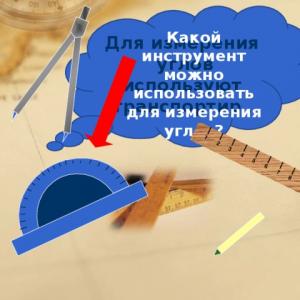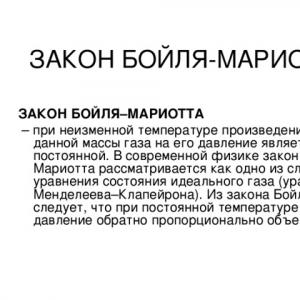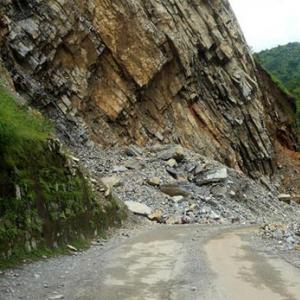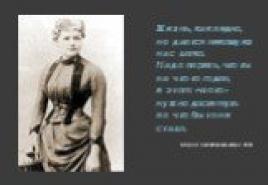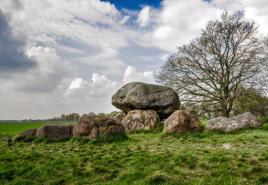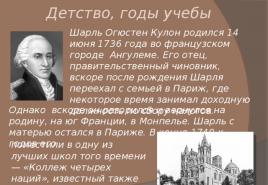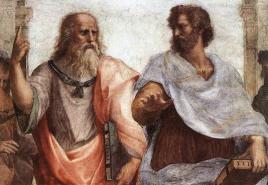“Open lesson on the topic“ National clothes of the peoples of Kazakhstan. Abstract of a technology lesson on the topic Marking paper parts by folding
Marking paper parts by folding. Origami.
Product: figurines of a butterfly and a frog. Individual composition.
Lesson Objectives:
1. Repetition and consolidation of the method of making a square by bending and techniques for making figures using the origami technique.
2. Acquaintance with new methods of work in origami technique.
3. Acquaintance with the concept of composition and with the techniques of creating a composition in the technique of paper applique.
4. Development of attention, imagination, creativity and activation of mental activity.
5. Improvement of fine motor actions.
6. Education of accuracy and conscientious attitude to work.
Materials, tools:
The teacher has: the textbook "Wonderful Workshop", a large sheet of rectangular paper and an enlarged layout of a square for demonstrating work techniques, a ruler, pencil, scissors, glue; enlarged models - product samples.
Students: a textbook, rectangular sheets of colored paper for origami or applique; blanks from workbook No. 1: base for composition (Appendix 1) and squares for origami (Appendices 2 and 5) 1, ruler, pencil, scissors, glue, trowel; small parts box.
The topic is written on the board: “Origami. Composition".
During the classes:
1. Message of the topic of the lesson. Statement of educational tasks.
- Remember what we learned to do in the last technology lesson. (We learned how to make a square of the desired size from a rectangular sheet of paper by folding. We also learned how to make a complex blank for origami figures - a multilayer triangle.) - Today we will remember these new ways of working, we will use them in the manufacture of other products. In the last lesson, we made one big picture, and today each of you will make a separate picture with origami figures for the exhibition. To help you do it better, we will get acquainted with some rules that must be taken into account when creating a picture. We will prepare materials for work. From the workbook we will cut out the basis on which you will create the picture. From the same notebook we will cut out colored squares from which you will make figures for your painting. If you need other details, you use colored paper, which is also on your desk.
2. Making a butterfly.
- First we will make a butterfly, which you then include in your painting. For this product, take either of the two squares. Consider them. Each square is colored differently on both sides. Any of these sides can be front, and you will get different butterflies. What exactly could be the options? (The butterfly can turn out pink, or gold, or polka dots, or blue with a pattern.)
- Remember how in the last lesson we made a blank - the base of the figure (multilayer triangle), and do this work. If you forgot, open the tutorial on p. 19.
Students do the work on their own, but if necessary, the teacher can show individual actions on his layout.
- Now open the tutorial on p. 24 and see how to make a butterfly out of this basic shape. Try to do the job yourself. Raise your hands to anyone who doesn't understand.
If necessary, the teacher demonstrates all operations on his model. Students put the finished figures in boxes.
3. Preliminary analysis and creation of a mental design for the composition.
- Each of you has already prepared one figurine for the painting. But before doing the rest of the details, you need to think about the picture in more detail. Open the tutorial on p. 26. Read the title and the first four sentences:
"Composition.
One or more figures can be used to create a composition.
Composition is a "composition", a combination of individual details into an expressive picture. Composition is like a story in which all the parts are connected. ”- Take your time to stick the details. Create a painting first, come up with interesting additions to the main details. So, we have met a new word - "composition". Tell in your own words how you understood its meaning. (Composition is the combination of individual details into a single image, into a picture. This is the arrangement of details in a picture.) - Yes, this word is also sometimes called the work itself. You can say "the painting" Summer ", or you can say" the composition "Summer". Let's take a look at the base for your composition, which was cut from your workbook. So far it is only partially filled: below there is a grass and several flowers, in the corner there is a yellow circle; maybe it's a sun without rays. Can we say that this is already a picture or composition? (No, it's kind of empty and meaningless; it's not interesting to consider such a picture.)
- That's right, it needs to be given meaning: for example, so that the composition can “tell” about the beauty of nature, the joy of a sunny summer day, or something like that. To do this, it will be enough to supplement the image with several details, but how many and what kind of details it will contain is up to you. But there is one condition: your composition must include origami figures; it can only be butterflies (or one butterfly) and flowers. You can, if desired, include in the composition one or two frogs, which are made from the same basic shape as the butterfly. After all, frogs may well meet in the summer in the meadow in the grass. Consider the composition on p. 31: It uses all the origami shapes you know. But this is a big composition, and this butterfly, which you have already made, may be enough for you. You just need to find the right place for it in the picture. To show me that you understand this, try creating a composition like this: just place the butterfly on the base for the composition.
Children carry out the task under the supervision of a teacher.
- What do you think is the composition? Try to explain it in words. (Yes, even this butterfly alone already allows you to create a composition, if you place it, for example, over grass and flowers: as if it flutters over them in the rays of the sun. The butterfly is large and bright, it immediately attracts attention and seems to speak with its flight of a cheerful sunny day.) - Right, for an expressive composition you do not need to do many elements, this can lead to an "overload" of the picture. Try to get by with a few details. See what mistakes in composition the tutorial on p. thirty:
Composition errors
1. The image is too small or shifted (to the side, down). A lot of extra paper, you want to cut it off.
2. Instead of a picture - individual elements that evenly fill the background, but are poorly connected to each other. As if goods were laid out for sale. It can't even be called a composition.
3. The image is too large for the background, it fills most of the space unevenly.
- What else could be added to this composition? (You also need to cut out and glue the rays around the sun. And you can add 1-2 tulips (origami) and a few blades of paper to the painted flowers - then everything will combine into a single picture.) - Why do you think that the sun is drawn on the base sheet ? Can't this yellow circle be turned into a large flower, to which your butterfly will fly? Think about it. And maybe the butterfly can still be decorated to make it more expressive. Look at the examples of products and pictures of real butterflies in the textbook (page 24): they can suggest their own interesting solutions.
4. Practical work on composing a composition.
- Imagine your composition in your mind and get the job done. Try to be creative. First, prepare all the necessary elements and place them on the base without gluing. I'll go through and see. Whoever has everything ready can, with my permission, stick the details.
The teacher checks the compiled compositions, gives advice if necessary and, as soon as it is ready, allows you to stick the elements on the base. Finished compositions are posted for viewing.
5. Analysis and discussion of compositions. Summing up the lesson.
- The compositions turned out to be different, despite the fact that they used the same shapes and similar elements. Many of you have managed to demonstrate real creative imagination in these works. But first, let's remember that one of the tasks that we set at the beginning of the lesson was to learn how to make forms even better, more accurately by folding the paper. In which works did the authors manage to show clarity and accuracy the most?
- What compositions do you consider the most successful and interesting and why?
- Are there any compositions in which mistakes or shortcomings are noticeable? How would you recommend fixing them?
- What new have you learned in this lesson? What have you learned?
During the final discussion, the students answer the questions asked by the teacher. You can complete the lesson by reading a poem by A. Fet (page 24 of the textbook):
... Don't ask: where did you come from?
Where am I in a hurry?
Here I sank light on a flower,
And now I breathe.
How long, without purpose, without effort,
I want to breathe?
Just now, flashing, I will spread my wings
And I'll fly away.
First Soviet Secondary School
Open lesson on the topic:
"National clothes of the peoples of Kazakhstan"
Prepared by G. V. Migitko
2017 year
Objectives: Education of Kazakh patriotism.
Tasks: Educational
- the formation of students' ideas about the culture, traditions and customs of the Kazakh people to consolidate the knowledge of Kazakh clothing.
- improving the ability to work with various materials in the application technique.
- acquaintance with new words for Kazakh clothing, pronunciation and spelling of these words.
Developing.
- development of creativity, observation, attention, perseverance, memory.
- development of general skills - work with reference literature, with tools, various materials.
- development of cognitive interest.
Educational.
- education of patriotism of interest and respect for the culture, traditions and customs of the Kazakh people.
- education of mutual assistance, collectivism, mutual respect, respect for work.
Method: Learning new explanatory material with practical application.
Type: Combined
Form: Group
Equipment:
Encyclopedia, dictionary with the name of clothing, jewelry in the Kazakh language. Types of clothing, photo with the image of the Kazakh people.
During the classes:
Org moment.
Lesson readiness. Checking for the absent.
Repetition of the passed material.
What did we learn in the last lesson?
- We got acquainted with the culture of the Kazakh people.
- What new have you learned about the culture of the Kazakh people?
- What ornamental compositions were used in the manufacture of clothes, shoes, dishes, etc.
Learning new material.
Each nation has its own homeland, its own traditions, rituals, games, cuisine, types of clothing.
Kokirekshe is a light sleeveless jacket.
Қaptyrma - buckle, clasp.
Alқa - pendants on the chest.
Zholpy - jewelry in braids.
Bilezik - bracelet.
Zhuzik is a ring.
Syrғa - sergi.
Kamshat burik - a headdress with a bunch of owl feathers.
Beldik - belt, belt.
Ішік - outerwear, sewn with fur inside and covered with fabric on top.
Tұmaқ - fur hat.
Kimeshek is a female headdress that covers the neck and shoulders.
Құndyқ - a headdress worn over kimeshek.
Masi - soft boots.
Kebis - put on mәsi, they look like shoes with thick soles.
Dalbai is a headdress in the form of a head.
Zharғaқ shalbar - bright trousers made of thin leather.
Men's and women's clothing have their own design features. For example, women's clothing is distinguished by darts on the chest, waist, shoulders, various folds, flounces, men's clothing is more strict.
In men's clothing, the shoulders are wider, the fastener is directed from left to right, while in women's clothing it is from right to left. The processing and finishing of shoulder products depends on their type and use. The types of finishing include embroidery, folds, reliefs, tucks, varieties of seams; shuttlecocks, overhead details, lace, braid, lurex and other materials for decoration.
Clothes for special occasions are much more complicated than everyday ones, they have various decorations, details and silhouettes. These garments have rich and sophisticated finishes.
For example:
Mens clothing
Camisole
By tradition, the front part of the camisole is decorated with a national pattern along the neckline and edges.
Girl's clothes.
The girls' clothes were mostly fitted, with an embroidered stand collar. The girls wore kylek dresses with 2-3 frills, long sleeves and a stand-up collar. Over the dress, they wore a kokirekshe - a light sleeveless jacket, the chest and hem of which were embroidered with patterns. They could wear kamzol over the dress, sewn to the figure with a silver kapsyrma buckle. The girls' clothes were sewn from bright fabrics, richly embroidered with ornaments, beads, coins, and semi-precious stones. The girl's hair was braided in braids and decorated with sholpa - ribbons and chains with ornaments. A takiya was put on the head - a small hat or kamshat burik, pointed with fur with a bunch of owl feathers, which played the role of decoration and amulet.
Hats.
The Kazakh people have several varieties of male and female headdresses. In the thousand-year history of the people, who spent most of their life in the saddle, the headdress was of particular importance for maintaining health. Headdresses were worn in winter and summer by women, men, children.
Borik is a very beautiful men's headdress.
Maiden takiya
If men's skullcaps were sewn from ordinary fabrics, then expensive materials were not spared for a girl's headdress, which was called takiya.
Kalpak is an exclusively male headdress.
Kasaba
- a beautiful female headdress resembling a skullcap in shape, but more voluminous.
Kimeshek
- female headdress. It was worn by young and old women. Sewed from white fabric, young - from fine white silk.
Saukele
- the most ancient and beautiful type of Kazakh women's headdress and the most elegant in the bride's wardrobe.
Saukele is a heritage passed down from generation to generation, a kind of symbol that represents a new stage in the life of a Kazakh woman. Having changed, saukele still does not leave the bride's wardrobe, worthily replacing the wreath and veil.
Appliques in clothes:
The ability to use applique for dyeing clothes is a great art that is not given to everyone. Even those who have needle skills and know how to sew clothes have difficulty decorating clothes. Consider the technology for executing the application on
When applying the applique, any product takes on an elegant look. The applique should attract attention, therefore it is placed on the chest, collar, sleeves and, if necessary, on the shoulders and back. To do this, choose expensive, shiny, gold or silver fabrics.
Pattern blending methods:
There are two ways to blend patterns. First, a fabric is applied to the drape intended for patterns. First, a shiny fabric - the patch is glued with a special thin adhesive cloth. Draw a pattern on it with chalk or other means. Then they are sewn on the machine along the contour. Cut out the stitched pattern. Then the pattern is processed with a frequent overlooking stitch, for which the fabric is pulled over the hoop. The ornament is ironed.
The second method differs from the first in that the pattern is preliminarily cut out of gilded or silvered brocade and connected with a zigzag fine stitch with the main fabric.
To make the overlay embossed, you can embroider it. The edges of the lining are trimmed with gilded or silvered braid.
The third method of making an appliqué from patterns is used only on some clothes. This is a pasted applique. Do it like this. Place a thin plastic wrap under the fabric along the outline of the pattern. Then use a highly heated iron to iron the base fabric.
To decorate clothes, they use not only applique, but also embroidery.
Practical work.
So, we got acquainted with Kazakh clothes and with the names of clothes in the Kazakh language.
Now we are going to do a collage.
Our collage will be called "Kazakh clothing".
What do we need for our work? How should the application be done - separately or all together?
pupils
- No. It is necessary to show people in national clothes.
Teacher
- Right. In the last lesson, we prepared the background.
If desired, it was possible to complete the background - a landscape, structures, a forest, a meadow, etc., a yurt and other objects and episodes.
Today we will finish our paintings. We will carry out the work in the form of an application.
How many of you will tell and demonstrate the procedure for performing the application.
pupils
- The first thing we should do is to remind about safety with tools, the correct organization of the workplace.
1. We carry out a sketch on a given topic.
2. The second is direct work with paper, glue, scissors.
- We sketch the elements of the picture, on white paper.
- / we make a stencil, cut them out /
- The next stage of our work is to outline the elements of the cut out parts on colored paper.
- Then we cut out the elements and glue them onto the prepared background.
Demonstrating.
Teacher
Now we have analyzed the order of the work.
Let's get down to independent work.
Control self-control over the performance of work.
Completion of work.
Summing up. Assessment.
What did we do in class today?
What have you learned new?
We learned about the national dress of the peoples of Kazakhstan.
- Learned how to make a collage on the topic covered.
- We learned how to work with the provided material, make sketches, applications.
Cleaning class
Lesson topic: Kazakh national dress
6th grade
Educational tasks:
- Educational: to acquaint students with the device and decoration of the yurt as one of the most ancient types of mobile dwellings of Kazakhs, as well as familiarize themselves with the types of Kazakh national clothes adapted to a nomadic lifestyle; practice practical image skills.
- Educational: moral, patriotic and aesthetic education on the example of studying the structure and decoration of the Kazakh national dwelling and clothing; fostering respect for the culture of other peoples.
- Developing: develop cognitive interest; develop compositional building skills; to form interest in the customs and traditions of the Kazakh people; develop observation, visual memory and creativity of students.
Lesson type: lesson in acquiring new knowledge.
Methods: explanatory and illustrative, reproductive.
Clarity: illustrations, slides. During the classes.
1. Organizational moment.
2. Introductory conversation of the teacher. High in the blue mountains, on a wide, green, mountainous steppe, there is a summer aul. These are nomad yurts. The clatter of horses' hooves is heard, sheep graze. You can smell the smoke and smell of a fire. People flock to the aul from all sides, children play. People are dressed in beautiful clothes. And here are the yurts. Today I invite you to visit three yurts, in which we will see many interesting things and learn how to draw a headdress: a skullcap. In the first yurt, we will learn everything about the ornament, repeating the material we have covered, visiting the second yurt, we will learn about Kazakh national clothes - (this is the topic of our lesson) and after visiting the third yurt we will do creative work.
Let's visit the first yurt: A person entering a traditional Kazakh yurt is amazed by its decoration. Any item made of leather, metal, bone, fabric and wool is decorated with ornaments. The entire life of a nomad is literally permeated with ornament.
- What is called an ornament?
- What is the ornament for?
- How many types are there in Kazakh ornaments?
- What groups are the ornaments divided into?
- What are the items decorated with ornaments?
- What was the purpose of ornament in antiquity, except for decoration?
- And in our time, the time of computer technology, where is the ornament used?
Yes, in clothes and not only. Well done, you can see that you have mastered the material well. And now we will find out what types of Kazakh national clothes are by looking into the second yurt. The folk costume of the Kazakhs reflects the development of traditions associated with ethnic and social conditions. Clothes for special occasions were sewn from expensive materials, decorated with beads, embroidery, and patterned braid. Women's clothing was divided into three groups: clothing for girls, women and grandmothers. The clothing consisted of a long vest, a ruffled dress, a headdress, and shoes.
A man's suit also consists of a chapan headdress, a camisole, a robe and a wide trousers. Shoes had a special look. The Kazakhs especially revered the headdress. Among the hats, saukele deserves special attention. This is a traditional, very ancient headdress of the bride. Famous artists of Kazakhstan Evgeny Sidorkin, Gulfayrus Ismailova, Agimsaly Duzelkhanov very often depicted people in national costumes in their paintings, where they showed not only the beauty of Kazakh clothes, but also the beauty of a person's inner world. his character. Here, in the painting of the artist Agimsaly Duzelkhanov, we see a girl and her beauty is emphasized by a headdress - saukele. The painting by A. Duzelkhanov is made in bright colors. Tall, conical, trimmed with expensive fur, decorated with pearls, corals, gold, silver, bright precious and semi-precious stones. Embroidered patterns, multicolored threads, braid trim, openwork metal decorations make saukele rich. The fur trim, decorated with an embossed cord, covers the delicate forehead. At the slightest movement, the brushes covering the temples begin to sway. A beaded chain hanging from the back from the top of the saukele sways in time with the steps of the young beauty.
The open look of the girl speaks of her bold and strong character. She looks confidently to her future. There is no doubt that she will be happy.
They sewed a headdress from very expensive materials. Be sure to attach a veil, which covered the girl's figure, giving her appearance a special grace. Kazakh national clothes have survived to this day. They dress her on holidays and in our modern time she has not changed much. Respectful and respectful attitude to national dress is a sign of the wisdom of the people and their concern for the future cultural heritage of the Kazakhs.
And now let's look into the third yurt - this yurt is a workshop, where we will draw a skullcap hat. The Kazakh people have many different types of hats. These are hats: saukele, kimeshek, borik. But there is a skullcap cap. And she will tell us about her .......... The most beautiful skullcap is a takia for little girls. Takiya has a round shape, is very light, its height is 10-15 centimeters. The feathers of an owl were sewn onto the surface of the taqia, the edges were decorated with expensive stones. Girls wore such a thing before marriage. When she got married, the girl sang a farewell song "son" dedicated to such a symbol of childhood. Now let's move on to the practical part of our lesson.
Creative work.
Our work will consist of the fact that we have to draw a skullcap. Decorate with an ornament. Pick up colors.
Skullcap ornament is not only a characteristic artistic drawing, but also a talisman. Skull-caps are worn by both men and women. Rules for making an ornament. Symmetry is very important in ornament. Color in the ornament.
The combination of colors in the ornament is important - they should alternate in a certain order.
Each color in the ornament has its own symbolism. Blue is the designation of the sky, white is a symbol of joy, happiness, yellow is knowledge, wisdom, red is a symbol of youth, beauty and spring, black is a symbol of earth.
1. The ornament must correspond to the volume and shape of the product.
2. The ornamental composition should match in color with the background of the base.
3. Patterns in compositions should be symmetrical.
4. The decorative center and borders of the ornamental composition should be highlighted with different colors. In ornamental compositions, 1, 2, 3, 4 colors are used.
The choice of background color and picture determines the composition.
Analysis of works.
6. Lesson summary:
What new did you learn in the lesson?
What is the ornament for?
Name the national headdresses in Russia, name the headdresses of the Uzbeks, Tatars, Buryats, and northern peoples. What material were they sewn from?
Let's put our work aside and check the new material in the form of oral tests:
Saukele is a headdress:
A) women.
B) girls.
C) the bride.
2. The clothes were decorated with:
A) only with braid.
B) only ornaments.
C) ornaments, beads, braid.
Exhibition of works. Grading.
Homework.
Cleaning of workplaces.
Kiima school - kindergarten named after K. Uskenbaev
Public lesson
Theme: "Kazakh national dress»
6 class "b"
Prepared and conducted
Fine art and drawing teacher:
2014-2015 academic year
Lesson topic: Sketch of the Kazakh national costume.
Subject: VKO technology. G. Semey. KSU "Secondary school number 18"
E-mail: Date: Class: 11 Name of teacher: Akasheva L.Yu.
Number of attendees:
absent:
Learning objectives implemented in this lesson: All students should determine the types of men's and women's clothing and study the history of the Kazakh national costume, demonstrate and present their ideas and intentions in the form of a sketch.
Most students will: Compare national costumes with contemporary styles.
Some students will describe design and accessories, ornamental composition in a suit, describe their idea in a sketch for future work.
Language Learning Objective: Students can use the words and terms of this lesson: ornamental composition, treatment, styles, leather trim. Properties of fabric, color combination, proportions in clothes, style, contrast.
Prior knowledge Ornaments of Kazakhstan
Expected Outcomes All students will be able to develop a sketch and demonstrate greater comprehension, intelligibility, and independence in their projects, creatively transforming informed knowledge of national costume design.
Lesson plan
Planned time Planned teacher activities Resources
0 - 3
12
Organizational moment of the lesson.
During the classes:
1. Preparatory stage. Organization of the workplace the correct distribution of tools and devices for the further implementation of practical work.
2. Communication of the topic of the lesson goals and objectives.
3. Writing the topic of the lesson.
4. Introduction to the topic of the lesson. The Kazakh folk costume reflects the ancient traditions associated with ethnic and social conditions. Clothes for special occasions were sewn from expensive materials, decorated with beads, embroidery, and patterned braid. Women's clothing was divided into three groups: clothing for girls, women and grandmothers. The clothing consisted of a long vest, a ruffled dress, a headdress, and shoes.
A man's suit also consists of a chapan headdress, a camisole, a robe and a wide trousers. Shoes had a special look. The Kazakhs especially revered the headdress. Among the hats, saukele deserves special attention. This is a traditional, very ancient headdress of the bride. Famous artists of Kazakhstan Evgeny Sidorkin, Gulfayrus Ismailova, Agimsaly Duzelkhanov very often depicted people in national costumes in their paintings, where they showed not only the beauty of Kazakh clothes, but also the beauty of a person's inner world. his character. Here, in the painting of the artist Agimsaly Duzelkhanov, we see a girl and her beauty is emphasized by a headdress - saukele. The painting by A. Duzelkhanov is made in bright colors. Tall, conical, trimmed with expensive fur, decorated with pearls, corals, gold, silver, bright precious and semi-precious stones. Embroidered patterns, multicolored threads, braid trim, openwork metal decorations make saukele rich. The fur trim, decorated with an embossed cord, covers the delicate forehead. At the slightest movement, the brushes covering the temples begin to sway. A beaded chain hanging from the back of the saukele top sways in time with the steps of the young beauty.
The open look of the girl speaks of her bold and strong character. She looks confidently to her future. There is no doubt that she will be happy. They sewed it from very expensive materials. Be sure to attach a veil that covered the girl's figure, giving her appearance a special grace. Kazakh national dress has survived to this day. They wear it on holidays and in our modern time, it has not changed, only modern notes have been introduced. Respectful and respectful attitude to national dress is a sign of the wisdom of the people and their concern for the future cultural heritage of the Kazakhs.
The Kazakh national dress is distinguished by its unique originality, perhaps also because the Kazakh people were very close to nature and led a nomadic lifestyle. It resembles, in fact, the clothes of the early nomads. Some types of everyday clothing have been around since the time of the Saks. Kazakh clothes with a smell to the left resemble the clothes of the Sakas, the medieval clothes of the Turks. The Kazakhs believed that wearing patterns and ornaments on the hem, sleeves of clothing, wearing uki (owl feathers) protects from evil spirits, evil spirits, diseases, they believed that these things have magical powers.
Working in groups.
Task for 1 group. “Describe the design and main elements of decoration of Kazakh women's national clothing. Types of women's national clothing. Identify features and prove that the clothes were comfortable, practical, and aesthetic. Give examples and historical facts. "
Task for group 2. “Describe the design and main elements of decoration of Kazakh men's national clothing. Types of men's national clothing. Identify features and prove that the clothes were comfortable, practical, and aesthetic. Give examples and historical facts. "
The groups present their research to the rest of the students by placing images and writing on whatman paper.
Feedback. Assessment. Self-esteem of groups.
25
5 min Creative work. Individual work.
The task. On A 4. or A3 format. to develop a sketch of a modern Kazakh dress or a man's suit, using elements of Kazakh ornament.
Discussion of the criteria for the assignment
Evaluation criteria.
The student is successful if:
- the sketch shows the correct proportions in the suit.
- the sketch shows the color scheme;
- the sketch demonstrates modern decorative elements;
- the student demonstrates accuracy and shows interest in work.
- all components of the image are expressed in the compositional solution.
Demonstration of working methods. Individual work is carried out, the compositional idea of \u200b\u200beach student is clarified in the drawing, in the detailed study of the main parts of the composition of the costume, work in color.
Reflection
Feedback. Assessment. Self-esteem. Analysis of works. Homework (Finish sketching) Cleaning of workplaces.
Attached files

